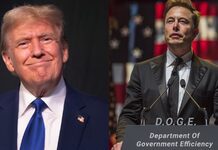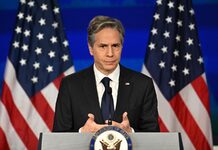These imperialist powers have staged their political agendas in the Arab countries to siphon oil resources from the Middle East. Terrorism and civil wars were created in the Arab countries because of the buried oil wealth. The “petrodollars” created by this oil also led to the export of terrorism to other countries.
The US has been using the Middle East as its “political playground” for decades. America’s oil policy has devastated many nations and claimed tens of thousands of lives. Like the United States, China is now in the Middle East for oil politics. China has emerged as a significant power in the Middle East region. China’s presence in the region is changing the geopolitical dynamics.
No one can expect China’s obsession with the Middle East to stop with its desire for traditional energy sources. This move by China fully embodies its geo-dominant political agenda.
It is reported that China has already signed strategic memorandums of understanding with most of the Middle Eastern countries for its economic activities and holds them in its grip.
Important among these moves are the China-Gulf Cooperation Council (GCC) Strategic Dialogue and the China-Arab States Cooperation Forum (CASCF) over the past two decades for which China has forged closer ties. Maintenance has arrived.
In 2016, a policy declaration was also published between China and the Arab countries under the name of “China Arab policy paper”.
The document outlines China’s comprehensive political strategy for engagement with Arab countries.
The policy document underpins China’s commitment to working with the Arab world in various fields, including political, economic, cultural exchanges and security cooperation. The Sino-Arab Policy Document is seen as a blueprint for safeguarding regional interests between China and Arab countries.
China’s relationship with the Arab world is not unlike the monopoly power the United States has had over the last several decades to plunder the resources of Arab lands. It is alleged that China is aiming to maintain its hegemonic politics in the region, not just to share the oil-rich land.
China’s development projects are springing up across the Arab world. China is encircling Arab countries with investments, infrastructure projects and trade deals. China is gradually increasing its economic and political presence in countries such as Iran, Saudi Arabia and the United Arab Emirates.
The Belt and Road Initiative, a project proposed by China in 2013, is presented to the outside world as a plan aimed at promoting economic growth and infrastructure development through investments. However, we can observe that many countries caught in this trap are drowning in unsolvable debt.
Many of the countries that have been absorbed into China’s PRI program are currently suffering from political and economic crisis. Centrally important places are being usurped by China from countries that do not repay their debts to China. It is said that there is a lot of evidence that China has seized the resources of many countries in return for debt.
Infrastructure such as ports, airports, railways and industrial zones are being developed through China’s BRI project. Through this plan, China is planning to strengthen trade, economic and political ties across Asia, Africa and Europe.
While the West has kept an eye on China’s growing influence in the Middle East, China’s growing surveillance technology and arms sales in the region are creating major repercussions for those countries.
It is said that the current situation in this Middle East region, which is torn by divisions and conflicts of religious schools of thought, is very favorable for the imperialist exploitative powers.
China has significantly increased its investments in the Middle East over the past decade under its One Belt One Road Initiative (BRI).
China has invested heavily in Saudi Arabia’s oil and petrochemical sectors. China is actively involved in Saudi Arabia’s infrastructure projects, including railways and ports. The Jazan Economic City project is the most significant project.
The Jazan Economic City project is a joint venture between Saudi Arabia and China. It is located in the Jazan region in the southwestern part of Saudi Arabia. It covers an area of 106 square kilometers and will invest USD 30 billion in this project.
China has established strong trade ties with the United Arab Emirates. Chinese companies have invested in the UAE’s renewable energy sector, particularly in solar projects.
China is a major investor in Iran’s oil and gas industry. China has invested heavily in the development of Iran’s oil fields and refineries.
Chinese companies are in talks with Iran to build a 1,100-kilometer rail line from the strategic port city of Mashhad in eastern Iran to Sabahar at a cost of two billion dollars.
China has invested heavily in Iraq’s oil industry. Investments in post-war reconstruction projects have been concentrated in Iraq. In return for these investments, China has been receiving oil from Iraq in an unrestricted manner.
China has invested in the development of the Suez Canal Economic Zone (SCZone) in Egypt. Egypt has signed $8 billion investment deals with Chinese companies for the project.
China has invested heavily in the development of Oman’s Duqm port and industrial zone. Duqm Port is strategically located on the southern coast of Oman. It also eases traffic to China, the Indian Ocean and the Middle East. The investment is part of China’s PRI programme. It aims to increase China’s global economic and political influence.
China has invested in several projects in Qatar’s natural gas sector, including LNG projects. Chinese companies are involved in infrastructure projects, including stadium construction for the 2022 FIFA World Cup.
Chinese companies have invested in Jordan’s renewable energy projects, particularly in solar and wind power generation, and in infrastructure projects including transportation and water management.
These Chinese investments targeting the Middle East are seen as China’s strategy to control energy resources, secure new markets for Chinese goods, and strengthen its geopolitical power in the region.










